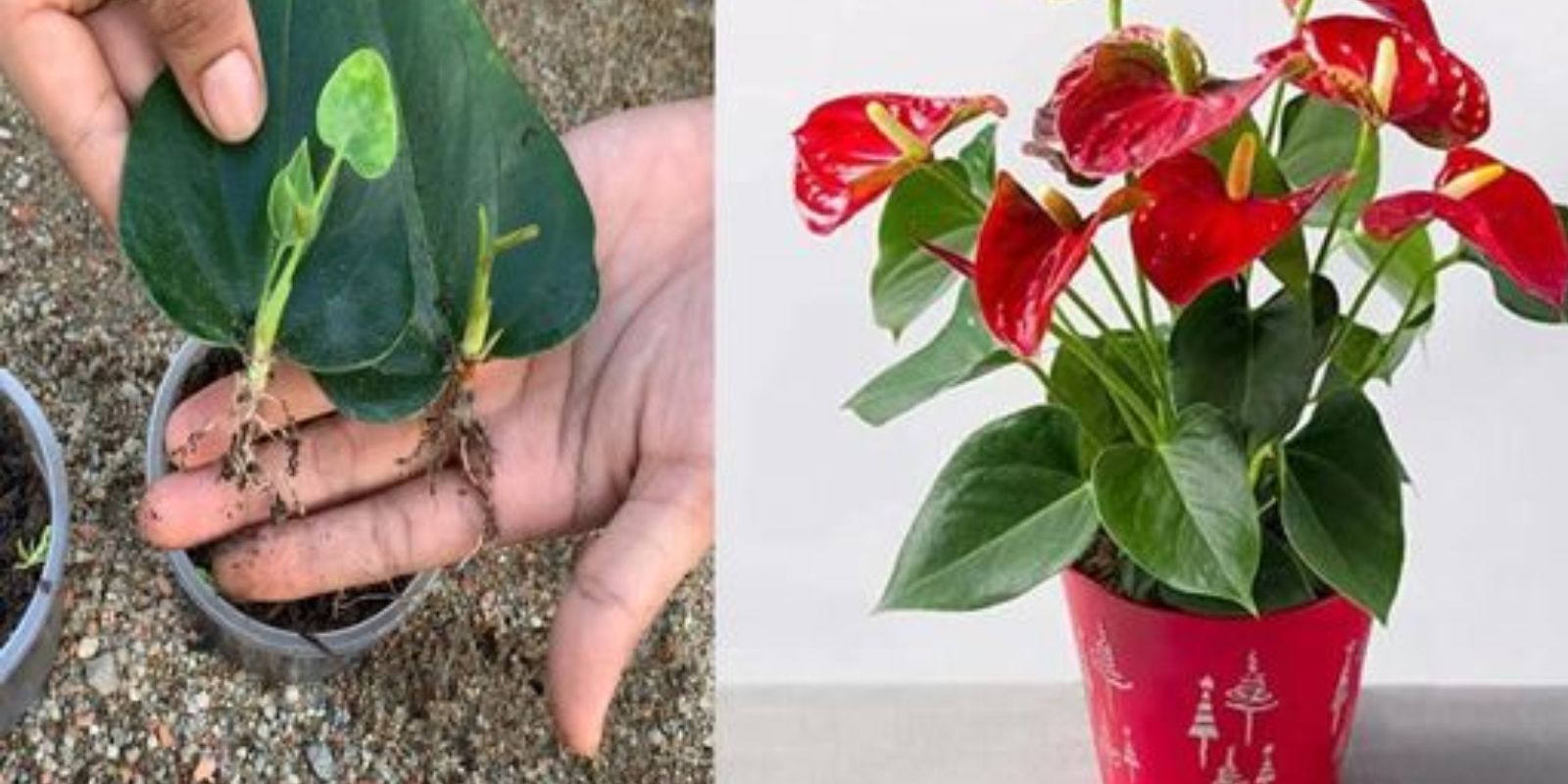Introduction
Anthuriums, also known as flamingo flowers or laceleaf, are prized for their stunning flowers and glossy, heart-shaped leaves. Originating from tropical regions of South America, these plants have become popular choices for indoor gardens due to their exotic appearance and relatively low maintenance needs. This article explores the essential care tips to ensure Anthuriums thrive and produce abundant blooms, enhancing the beauty of any indoor space.
Anthurium: A Profile of Elegance
Anthuriums belong to the Araceae family and encompass over a thousand species, each showcasing unique variations in leaf shape, size, and flower color. The most recognizable feature of Anthuriums is their spathes, which are often mistaken for flowers but are actually modified leaves. These spathes can be red, pink, white, or even green, contrasting beautifully against their glossy, dark green foliage. Anthuriums are typically grown as houseplants but can also thrive in shaded outdoor gardens in tropical and subtropical climates.
Cultivation and Planting Anthuriums
Selecting the Right Anthurium
When choosing an Anthurium for your indoor garden, look for healthy plants with glossy leaves and vibrant spathes. Varieties such as Anthurium andraeanum and Anthurium scherzerianum are popular for their prolific flowering and adaptability to indoor environments.
Potting Mix and Container
Anthuriums prefer well-draining potting mix that retains moisture without becoming waterlogged. A mixture of peat moss, perlite, and pine bark works well. Select a pot with drainage holes to prevent water accumulation, which can lead to root rot.
Light Requirements
Provide bright, indirect light for Anthuriums. They thrive in filtered sunlight or artificial light that mimics their natural habitat under the canopy of tropical trees. Avoid placing Anthuriums in direct sunlight, as it can scorch their leaves.
Temperature and Humidity
Maintain a warm environment for Anthuriums, ideally between 65-80°F (18-27°C). They are sensitive to cold drafts and temperature fluctuations, so avoid placing them near air conditioning vents or windows during winter.
Enhancing Flowering in Anthuriums
Watering Routine
Anthuriums prefer consistently moist soil. Water thoroughly when the top inch of soil feels dry to the touch, typically every 1-2 weeks depending on environmental conditions. Use room temperature water to avoid shocking the plant.
Humidity Requirements
High humidity is crucial for Anthuriums, mimicking their native tropical environment. Maintain humidity levels between 60-80% by misting the leaves regularly or placing the pot on a humidity tray filled with water and pebbles.
Fertilization Schedule
Feed Anthuriums with a balanced, water-soluble fertilizer every 4-6 weeks during the growing season (spring and summer). Choose a fertilizer formulated for flowering houseplants or use a fertilizer with a higher phosphorus content to promote blooming.
Pruning and Deadheading
Remove spent flowers and yellowing leaves promptly to encourage continuous blooming and prevent the plant from wasting energy on non-productive growth. Use clean, sharp scissors to make clean cuts near the base of the stem.
Common Care Issues and Solutions
Pest Management
Anthuriums are generally resistant to pests, but they can occasionally attract spider mites, aphids, or mealybugs. Inspect the leaves and stems regularly for signs of pests and treat infestations promptly with insecticidal soap or neem oil.
Disease Prevention
Root rot is a common issue in Anthuriums caused by overwatering or poor drainage. Ensure the potting mix is well-draining and allow excess water to drain freely from the pot. Avoid letting the plant sit in waterlogged conditions.
Potting and Repotting
Repot Anthuriums every 1-2 years or when the plant outgrows its current pot. Choose a slightly larger pot and refresh the potting mix to provide ample space for root growth. Repotting is best done in spring when the plant is actively growing.
Seasonal Care Tips
Spring and Summer
During the growing season, increase watering frequency and fertilize regularly to support vigorous growth and blooming. Rotate the plant occasionally to ensure even light exposure.
Fall and Winter
Reduce watering and fertilizer application during fall and winter when Anthuriums enter dormancy. Monitor temperature fluctuations and humidity levels to prevent stress on the plant.
Benefits of Growing Anthuriums Indoors
Aesthetic Appeal
Anthuriums are prized for their striking flowers and glossy foliage, making them attractive additions to any indoor space. Their long-lasting blooms and vibrant colors brighten up living areas, offices, and conservatories.
Air Purification
Like many houseplants, Anthuriums help improve indoor air quality by absorbing harmful toxins such as formaldehyde and xylene. Their large leaves efficiently filter pollutants and release oxygen into the air, promoting a healthier indoor environment.
Therapeutic Benefits
Caring for Anthuriums can be a therapeutic hobby, reducing stress and anxiety levels. The act of nurturing plants and watching them thrive can provide a sense of accomplishment and well-being.
Conclusion
Anthuriums, with their exotic blooms and resilient nature, are ideal choices for indoor gardening enthusiasts seeking to add beauty and elegance to their living spaces. By following the essential care guidelines outlined in this article, you can cultivate healthy Anthuriums that bloom prolifically year-round. Whether you’re a novice gardener or an experienced plant enthusiast, Anthuriums offer a rewarding gardening experience with their stunning flowers and minimal maintenance requirements.
Motivation
Discover the joy of cultivating Anthuriums in your indoor garden and witness their spectacular blooms brighten your home throughout the seasons. With proper care and attention, Anthuriums can thrive and reward you with their vibrant flowers, enhancing your living environment with natural beauty and charm. Start your Anthurium journey today and create a captivating indoor oasis that reflects your love for plants and nature. 🌿💐

